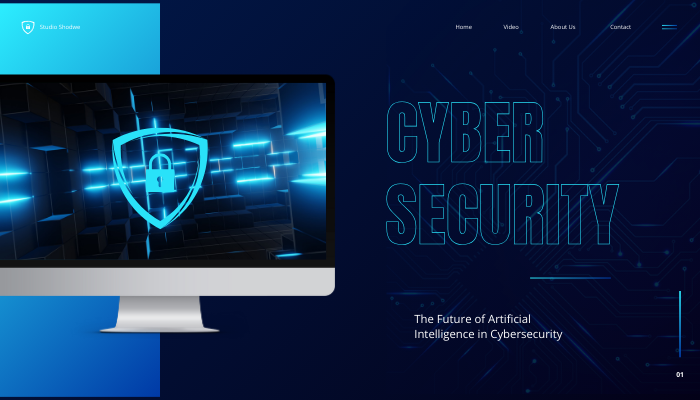AI has been ingrained in many industries, and cybersecurity is no different. The necessity of integrating AI into cybersecurity systems is growing as cyber attacks become more sophisticated. Artificial Intelligence (AI) in cybersecurity has enormous promise for improved defense against complex threats, quicker reaction times, and more effective threat identification. To guarantee AI’s efficacy and dependability in protecting digital assetvs, there are, nevertheless, certain obstacles in this future that must be overcome.
The Increasing Requirement for AI in Security
There are more devices, networks, and data in the digital world than ever before, and it is growing quickly. Cyberthreats have increased as a result of this expansion, encompassing ransomware, phishing attempts, advanced persistent threats (APTs), and zero-day exploits. Conventional cybersecurity techniques.
AI-Assisted Threat Identification and Mitigation
Real-time threat detection and prevention is one of AI’s most important contributions to cybersecurity. Conventional security solutions are less effective against novel or unidentified threats because they rely on preset rules and signatures to identify threats. AI, on the other hand, is able to examine enormous volumes of data and spot irregularities that can point to a possible danger.
For instance, historical data can be used to train machine learning algorithms to identify trends linked to various kinds of cyberattacks. Then, using real-time monitoring of network traffic, user behavior, and system records, these algorithms may spot any anomalies from the norm. The AI system can notify security teams or take autonomous steps to reduce anomalies.
Automated Reaction to Events
Automated incident response is another area where artificial intelligence is poised to transform cybersecurity. When a cyberattack happens, reducing damage can depend greatly on how quickly it is discovered and dealt with. By automating operations that would otherwise need human intervention, artificial intelligence (AI) can help expedite the incident response process.
AI can automatically isolate hacked systems, stop malicious traffic, and start recovery procedures, for example. Organizations can minimize the impact on their operations by responding to attacks faster by automating these procedures.
Additionally, by connecting data from many sources, determining the attack’s primary cause, and giving security teams useful insights, AI can help with the investigation of security incidents.
Analytics and Artificial Intelligence in Cybersecurity
Another area where AI is anticipated to be crucial to cybersecurity is predictive analytics. Artificial intelligence (AI) is able to foresee possible cyber threats ahead of time by examining past data and seeing trends. Organizations are able to enhance their defenses against impending threats and take preventive action thanks to this proactive approach.
AI, for instance, can identify behavioral patterns linked to earlier intrusions and forecast the potential timing and location of such strikes. By using this data, resources may be allocated more wisely, security measures can be prioritized, and overall readiness can be improved.
AI is not only good at anticipating dangers; it can also assist businesses in identifying their weaknesses. Artificial Intelligence may detect vulnerabilities in an organization’s security and suggest ways to strengthen them by modeling various attack scenarios.
AI’s Place in Threat Intelligence
An essential part of contemporary cybersecurity measures is threat intelligence. It entails gathering and analyzing information about possible risks, including attack paths, cybercriminals’ strategies, and indications of compromise (IOCs). By automating the gathering, analyzing, and sharing of pertinent data, artificial intelligence (AI) can greatly increase the efficacy of threat intelligence.
Threat intelligence platforms driven by AI are able to comb through enormous volumes of data from a variety of sources, such as social media, dark web forums, and open-source material. These platforms have the ability to recognize new threats, monitor the actions of cybercriminal organizations, and give security professionals real-time updates.
